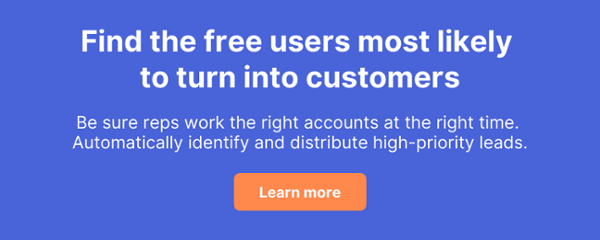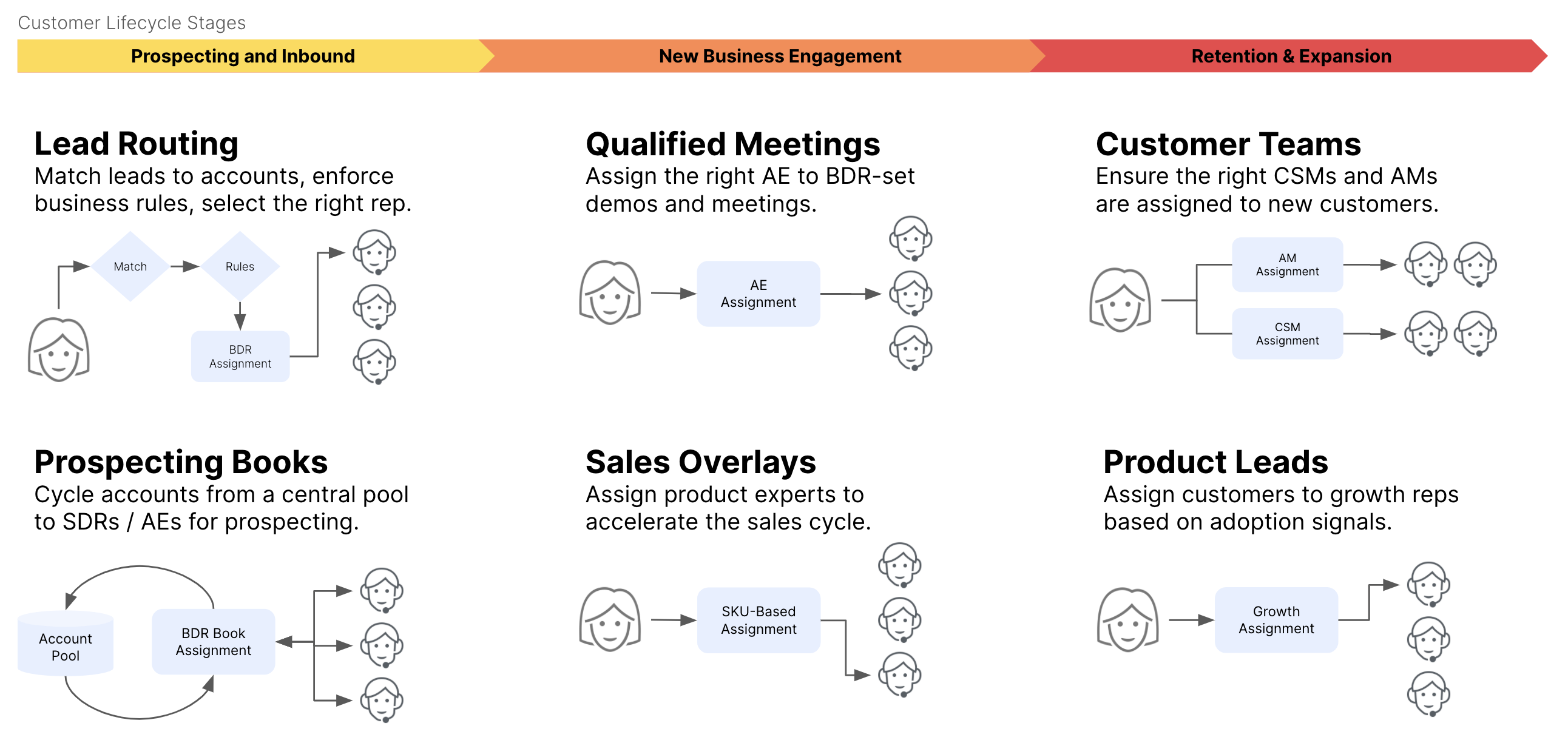Let's talk about product led growth, and its impact on sales organizations. Should a PLG approach lead to a smaller sales team? Does it mean a smaller marketing budget? Is it right for your company?
Recently Gradient Works co-founder Hayes Davis sat down with Yesware CEO Joel Stevenson to discuss product led organization growth and its implications for SaaS companies. The full conversation is on the Gradient Works YouTube channel.
It's a thorough discussion of product led growth (PLG) and product qualified leads (PQLs), and their impact on a company's revenue organization. It's also a great introduction if you're new to product led growth. But even if you're a PLG pro, a number of important questions came up in their conversation worth that are exploring in more detail. Questions like:
- Does PLG change the way we staff and build our sales organizations?
- Do we even need SDRs and BDRs?
- Should marketing, sales, or the product be your main source for delivering leads?
- Are all sales inside sales now?
- What is the best kind of sales leader for a PLG organization?
So let's discuss those issues. But first, to make sure we're all on the same page with product led growth, here's a quick overview. What exactly is PLG?
What is product led growth?
Product led growth is a SaaS business development framework where the product is the main mechanism for a company's revenue growth. OpenView Venture Partners defines PLG as the “end user-focused growth model that relies on the product itself as the primary driver of customer acquisition, conversion, and expansion.”
It’s an evolution of the self-service and freemium models, where the product speaks for itself. That includes:
- Distributing your product where your customers are
- Making it dead simple to get started with your product
- Delivering value before anyone pays for anything
- Driving acquisition through a viral adoption mechanism
- Hiring sales later, to support growth instead of driving it
- Developing your product based on customer behavior and feedback
PLG organizations are generally viewed in contrast to a sales-led growth or marketing-led growth model. In PLG, salespeople step in when a customer needs more of a product, and they’ve reached the limits of what they can do on their own. When a product demands larger budgets, bigger rollouts, and more sophisticated technical requirements.
PLG is definitely having a moment. So how does PLG impact a SaaS sales team?
PLG and sales team structure
PLG organizations usually don't need a large sales team, especially at first. They may not need SDRs or BDRs at all. Instead, PLG organizations focus on developing strong customer success and support teams, and a robust account management group whose goal is to nurture customers on their way to larger deployments. Maybe they use ADRs (account development reps) to expand the customer base and find leads among current customers, instead of a large team of SDRs to look outwards.
Where do PLG leads come from? Typically they come from an existing user base, instead of from marketing-driven inbound lead generation motions or from sales-driven outbound lead identification. This isn't to say there aren't marketing and sales-generated leads, but they're not the primary driver of growth.
You may find that PLG companies spend less on top-of-the-funnel (TOFU) marketing, but someone still has to attract those new free users. A viral adoption loop doesn't solve an entire acquisition strategy. And you may find that PLG companies have smaller sales teams since they don't have to spend as much time outbounding. But they'll likely have larger account management (AM) and customer support (CS) teams to support users in their product journey.
Further - and especially now that so many SaaS sales teams are remote - almost all PLG sales are inside sales. When customers have been using a product before they ever spend a dollar with a company, they become their own best advocates. Sales teams don't need to spend as much time in the field, glad-handing prospects to close a 6-figure deal. Inside sales teams can be more nimble and adapt more easily to optimizations that come from a PLG-based approach.
And who should run sales and marketing at a PLG company? The best PLG sales leaders are operationally-focused and can think about the entire revenue system as a whole.
Joel suggested looking for sales leaders who buy into concepts like the ones Eliyahu Goldratt presents in The Goal: systems thinking, the theory of constraints, and the idea that revenue organizations are sort of like factories that can be continuously optimized for better performance.
The theory of constraints
If you haven't read Goldratt's The Goal, a brief summary... The Goal is a business book written like a novel. It's actually kind of a weird book, but it has some useful business lessons in it.
The first of those lessons is the theory of constraints, which states, "A bottleneck is any resource whose capacity is equal to or less than the demand placed upon it. A non-bottleneck is any resource whose capacity is greater than the demand placed on it."
So if you can identify a constraint (or bottleneck) in your system and work on improving it, your system will be more productive. That should follow these steps:
- Find the weakest link in your system
- Make it stronger/more effective/better performing
- Avoid doing more than the weakest link can handle, or the whole system will break down
- And then work to do more with the constraint, to increase capacity
- Repeat with your next weakest leak
You need to measure your entire system to find that weakest link. Use data to figure out where something isn't working as well as it should. Fix it. Then repeat. It's a process of ongoing improvement focused on improving the overall system and not just its individual components.
This is where the revenue operations organization in a PLG-focused SaaS company shines. RevOps can act as a cross-functional bridge between the old-school silos of marketing, sales, and account management. We know that strict silos between teams prevent the overall revenue system from working efficiently. But you need more than alignment; you need interconnectivity.
What are some potential weak links in your revenue system? Some examples might be:
- Leads aren't converting into opportunities or closed deals (which is often framed as marketing not sending the right leads to sales)
- New customers are coming in with the wrong expectations and causing onboarding problems (often framed as sales overselling the product just to close more deals)
- Customer churn is too high (often framed as account management not managing renewals closely enough)
There's a lot of blame being spread around, but it's likely not just one team's fault. If marketing isn't sending the right leads, why not? If sales are closing bad deals, why? If account management can't stay on top of renewals, why? Usually, there's something a lot more subtle - and imminently fixable - going on. For example:
- Marketing campaigns aren't reaching the ideal customer profile (ICP)
- The sales team isn't enabled or equipped appropriately
- The product isn't priced or packaged to fit market needs
These breakdowns in the system are everyone's problems, and no one team should shoulder the blame. But an operationally-focused revenue leader should be able to identify the constraints in the system, and work to improve them, thus improving the entire system's performance.
Is PLG right for your company?
If you're considering a product led growth approach for your own company, consider this. If you're selling to lots of smaller companies who tend to research and adopt technology on their own, PLG could be a great fit for you.
Product led growth may not be a good fit if your company fits in one or more of these categories:
- Selling to a small number of very large companies
- Professional services model
- Custom product development
Think about questions like... Can your customers get value from your product right away? Can you build a strong enough user experience that a new customer can get started without any additional setup or assistance from your team? Is there a viable free or low cost tier you can offer? How will your product spread to new users?
One of the promises of product led growth is predictability and scalability. You can adjust every part of the system to optimize growth. If you spend $X on a developer to build product functionality that thousands of customers will use, that may be a more predictable use of that money to scale than hiring a set of outbound SDRs to cold call into a set of potential leads.
But that only works if your company is the right fit for a PLG strategy. Is yours?
Do you work in a revenue team? Want more discussions like this? Subscribe to our free newsletter for more.





